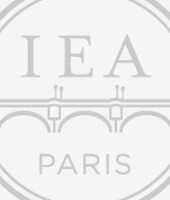Pictures and language
Intervention de John Kulvicki (résident 2017-2018 de l'IEA de Paris) dans le cadre du séminaire "Iconicity : What is a picture?", organisé par Roberto Casati (directeur d'études de l'EHESS, directeur de recherche au CNRS (IJN))
Présentation du séminaire
Ours is claimed to be a civilization of pictures, and most definitely pictures have profoundly colonized society and our daily lives. Each day billions of pictures are generated, stored, exchanged, published, watched, commented upon, debugged. Communication, propaganda, journalism, but also – increasingly – research and education use pictures as vectors: they are considered not only to be irreplaceable, but they aim at becoming the dominant vehicle for information transmission. Most of what surrounds us was first born and visualized in a picture: from the building you live in, to the furniture in your room, cars, airplanes, smartphones, design is a process that begins in some sort of visualization. Machines and algorithms are developed that can read, interpret and classify pictures (eg. automatically recognize people in photographs).
But what are pictures? Much as we seem to have a robust set of intuitions about what counts as a picture, it has proven exceedingly difficult to convincingly characterize the concept. We are here interested not in what makes a picture a picture of this or that, but in what makes a picture a picture, as opposed to, say, a diagram, or a string of text. We call this the iconicity problem. Philosophers from Wittgenstein to Goodman, art historians like Gombrich, psychologists like Gibson, Kennedy and Cavanagh have explored the theoretical boundaries of the notion of a picture, and the philosophy of pictorial representation is a rich theoretical field. The question of the theoretical characterization of iconicity has become particularly urgent as digital pictures challenge the notion of pictures as paradigm cases of analog representation.
In this seminar we shall tackle the question mainly from the point of view of the interface of pictures and thought. When we look at pictures, we can extract information that is then used in reasoning and linguistic communication. Does this impose constraints on the nature of pictures and of thoughts? How can digital content be extracted from analog structures? We shall study in depth the limit case of maps: are they pictures? What can they tell us about our understanding of pictures?
|
|
|
Lier la philosophie de l’art à la philosophie de la perception 15 janvier 2018 - 15 juin 2018 |
|
|


